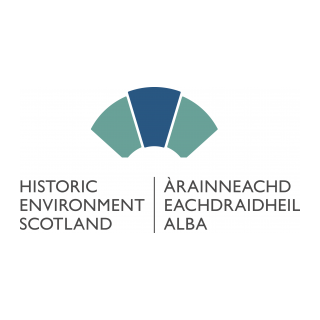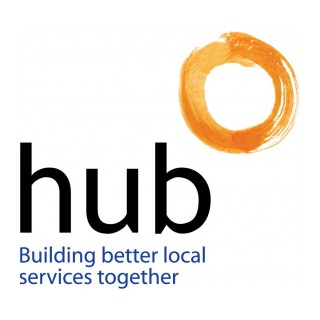The British Standards Institute describes Soft landings as
"A process for the graduated handover of a new or refurbished asset/facility, where a defined period of aftercare by the design and construction team is an owner’s requirement that is planned and developed from the outset of the project [from BS 8536-1]"
Essentially soft landings strives for better outcomes for built assets through early engagement of the operational team. It is not just a handover protocol but a commitment from the design team, through construction and into operation providing emphasis on improving operational readiness and performance in use. The diagram from BSRIA below, conceptualises the typical soft landings process and activities.
The BSRIA Soft landings framework for better briefing, design, handover and building performance in use, is one of a suite of Soft Landings documents available free to download from the BSRIA website [link]
The following benefits have been identified in the adoption of soft landings
- Provides an asset that meets the end users’ needs and required operational outcomes;
- Enables end user involvement at an early stage and throughout the project;
- Enables early challenge of design decisions that may impact upon on-going maintenance and operational cost of the asset, which form the majority of the expenditure during the asset’s lifecycle;
- Provides fully populated asset data from the BIM model, reducing the cost of data input to FM asset management systems;
- Ensures that full training, commissioning and handover is provided at an early stage, which reduces the cost of protracted handover and means the building will reach optimal performance sooner;
- Post occupancy evaluation, which monitors the project outcomes [usually through an extended after-care period] post completion against performance and cost criteria, with lessons learnt captured for future projects.
Using BS 8536-1 to support Soft Landings
From a BIM perspective the Soft Landings approach is supported by BS 8536-1:2015 Briefing for design and construction and Code of practice for facilities management (Buildings infrastructure). This standard provides recommendations to ensure the design and construction of assets and facilities take into account operational and performance requirements of the owners, operators and end-users. The standard includes examples for: the brief checklist, environmental performance evaluation, social performance evaluation, economic performance evaluation, responsibility matrices, risk and opportunity assessment, questions for the owner, stakeholder identification and impact analysis and activity checklists.
Whilst BS 8536 assumes the use of BIM level 2 for projects, the adoption of soft landings in not precluded where BIM Level 1 is being applied.BS 8536 sets out a series of key principles and requirements that should be followed by the Employer:
- The owner should be able of articulate the business case for the project, its objectives and the required performance of the of the asset / facility.
- The owner should be capable of expressing the security needs for the project and the ongoing operation of the asset / facility. Where the project relates to a sensitive asset / facility, the owner should appoint a built asset security manager (see PAS 1192-5).
- An evidence-based approach to design and construction should be adopted that is driven by outcomes that are explicit and measurable, wherever possible, and which reflect the requirements of the owner, operator, end-users and other key stakeholders in regards to the operational performance of the asset / facility.
- Clear targets should be set for the expected outcomes at the start of the project and capable of being cascaded through the supply chain. Theses targets should be reviewed at defined information exchange points within work stags and finally, during the operation of the asset / facility.
- The appointment of the design and construction team should incorporate a commitment to defined periods of aftercare.
- Post-occupancy evaluation [POE] and other reviews of performance should be undertaken with the involvement of the design and construction team during a defined period of extended aftercare and these together with the lessons learned should be recorded and stored so that they are available to the operator, operations team or facility manager.
- The transition from design through construction and into operation should include the transfer of project information and data for operational purposes from the project information model [PIM] to the asset information model [AIM]. In a BIM level 1 environment this may still be a relatively manual process.
The diagram below illustrates the soft landings approach and how the plan of work is a framework to ensure that the deliverables of all contributors are identified and appropriate to the decisions required at each work stage and should be adopted by the owner as the basis for delivering and operating the asset/facility.
The plain language questions allied to soft landings should be drafted for each work stage for the purpose of obtaining information to enable operational decisions to be taken during the capital delivery stages. Annex G of BS 8536 sets out a series of exemplar Plain language questions for the owner.
A key element of the Soft Landing process are the regular reality reviews of the developing design and construction activities to ensure that key rooms, systems etc can be effectively maintained and operated. In a BIM Level 2 process this is supported by models and 4D simulations and in the Level 1 environment CAD and visualisation studies. Essentially the information presented should allow end-users to visualise and understand how the asset will work in use during the design and construction stages. The plain language questions and data drops can be used to test the predicted and actual performance of an asset. These virtual reviews should be augmented with regular site visits by the Soft Landings champion and other appropriate stakeholders.
Essentially the adoption of Soft-Landings on a project should not affect the normal procurement processes and contract conditions.
As with all contracts project requirements are built into the contracts. Soft Landings is just part of this procurement process. It is a simple concept, based around defining the needs prior to procurement, embedding targets and support requirements into the scope of works, specifications and plan of works. Budget consideration should however be taken for Specific requirements for attendance and support for the Aftercare period are to be designed by the Project Manager and then embedded into procurement documents. This is likely to seek engagement beyond Practical Completion and standard Defects Liability Periods.
The Roles and Responsibilities of Soft Landings
In Soft Landings, the client is an active participant, and leads the process at the outset to develop the roles and responsibilities. This should include client representatives, all key design professionals, and the supply chain. The people involved in this process should be the actual individuals who will work on the project
The client has an obligation to identify and make key people available for consultation and reporting (an obligation also on the supply chain). To the extent possible, this should include all technical people, and personnel with a stake in the management or subsequent operation of the building, such as facilities managers and caretakers.
The client should ask their construction professionals to ensure continuity of personnel. It is not unusual for bid teams to win a project, only then for a different set of people to work on the job. Realistically this cannot be prevented, but clients can ask organisations for greater continuity as part of their Soft Landings commitment.
Organisations appointed later need to be brought into the Soft Landings team. Outline roles and responsibilities should therefore be included in tender documentation. Greater effort should be made to bring in key specialists to advise on design development earlier than would be the norm, such as the commissioning engineer, and the facilities manager (where appointed). Suppliers and sub-contractors whose input is central to building performance should also be involved in early discussions. These should include the controls designer or engineer, lighting controls supplier, and catering and IT suppliers.
Where these people are not available or yet to be appointed, proxies in the form of industry specialists should be invited to comment in a (non-contractual) advisory capacity. This input, which might be provided for free, will help those with Soft Landings roles and responsibilities to appreciate all the issues and opportunities before options are closed down.
All aftercare activities should be agreed early in the project (no later than tender stage), even if the client opts to issue a separate contract for aftercare services rather than extend the main contract to cover the three years of aftercare. The aftercare roles and responsibilities – along with any specific performance targets.
Additionally, the Government Soft Landings programme advocated the appointment of a Soft-Landings Champion to each project to:
- Represent the needs of the End Users; Occupiers, Visitors and Facilities Managers;
- Actively engage with the End Users to ensure their needs are input into all stages of the project;
- Actively engage with the Project Team to ensure these needs are considered at all stages of the brief, design, construction, handover and in use support;
- Support the Project Manager in developing and implementing the Aftercare Plan and Post Occupancy Evaluation studies; and
- Supports the ongoing development of SL through the organisation.
Delivering Soft Landings
BS 8536, the Government Soft Landings [GSL] approach and the BSRIA soft landings framework all offer similar practical advice on the implementation of Soft Landings, these include:
- Having clear operational vision that can be defined clearly with success criteria that can be measured.
- Using a framework to help identify stakeholders and classify how levels of engagement should be tailored.
- Having appropriate communication channels and methods to articulate the purpose of the project and operational goal to all relevant project stakeholders.
- Soft landings put an emphasis on the need for better collaboration between the procurement team (designers and constructors) and representatives of users and operator therefore defining and allocating roles and responsibilities for the soft-landings process is important. GSL recommends the introduction of Soft Landings roles, appointed member(s) of the operational or estate team unless another arrangement is more practical. The Soft Landings Framework guidance recommends the client has a Soft Landings representative, or Champion, and the project delivery team has a Soft Landings Champion (it could be a consultant, project manager or someone else in the delivery team with an interest in the user activities).
- A systematic review of lessons learned from the evaluation process of previous similar projects, including interviews with those that delivered and operated, which should inform better briefing and design practice.
- Project outcomes, especially those that relate to functionality and effectiveness should be set and agreed at the beginning of the project. (On this matter the GSL policy is very specific about identifying a range of economic, social and environmental objectives/metrics). GSL contract guidance also requires objectives to be set for capital cost and operating costs, and for these costs to be reviewed and updated as the project progresses. GSL also therefore helps to provide a mechanism for clients to monitor project costs.
- At this stage the Post Occupancy Evaluation criteria should also be established and aligned with the measurable targets.
- Key stage SL gateway reviews should also be established to support operational decision making and test targets early in the design and construction stage. These should align with the Master Information Delivery Plan and the stage information requirements.
- It is important that these SL requirements are embedded into the tender documentation and criteria for assessing ability to deliver.
- Once a delivery team is appointed it is suggested a SL kick off meeting take place to ensure that that the operational strategy and targets plus the stage information deliverables are fully understood.
- During the design and construction process regular soft landing review meetings [reality checks] should be undertaken with the SL Champion and other SL stakeholders. Using BIM and other virtual engagement technologies the current design should be tested against operations targets and any issues logged.
- Attention should be given to the pre-handover stage, with regards to testing, commissioning, training and handover documentation, and the initial aftercare period, so that building management representatives are better prepared for moving in to the building. Early testing of data transfer to Computer Assisted Facilities Management [CAFM] and other Asset Management Systems [AMS] should be considered. A building readiness and after care plan should also now be in place. Handover data and information should also be assessed against the MIDP.
- At the point of handover data and information should be migrated from the Project Information Model into the Asset Information Model.
- Following handover, the aftercare team should be meeting with the FM team and end user stakeholders to identify and initial operational issues and develop an action and communications plan to help resolve
- Formal post occupancy evaluations should be considered at the end of years 1,2 and 3 with reviews against the initial targets. This process will include surveys with end users and logging and review of performance data. Lessons learned should be formally captured.
In summary client organisations need to understand and develop a bespoke soft landing plan which covers:
- Roles and Responsibilities Accountability and responsibility, collaborative engagement, right skills utilised at the right time. Key to this is the introduction of the Soft Landings Champion role.
- Focus on outcomes Setting briefs to meet the required outcomes and ensuring these are delivered. There should be a clear and expressed commitment by the client and project team to follow-through with Soft Landings aftercare activities, and to observe, fine-tune and review performance for three years post-completion. The aftercare activities should aim to achieve the Soft Landings performance objectives, and any targets agreed at the design stage.
- Aftercare and Post Occupancy Evaluation Supporting the needs of the End Users, evaluating success in project delivery, lessons learnt and knowledge share. Soft Landings recommends a three-year aftercare period. By the end of year one the building should have settled down. By year two, the building should have entered stable operation, during which time the energy data should be reviewed and adjustments recommended in a quest to improve performance. The second year will also involve fine-tuning, at the end of which a structured post-occupancy evaluation (POE) should be carried out. The third year will be a period where the aftercare team respond to findings from the POE, make any necessary interventions, and maintain their monitoring of the building’s performance and energy consumption.
- Performance Management Evaluating the success of the finished product and the performance of the team in delivering it. The frequency of site visits should tail off as the building settles down and monitoring becomes routine. The aftercare process should culminate in a final POE to measure and report the building’s performance (primarily energy performance and occupant satisfaction) against the agreed performance objectives, and any specific targets required by the client
- Contracts and Procurement Identify and build in the project specific needs into the procurement process. Soft Landings does not significantly affect standard procurement processes and contract conditions and offer the following practical guidance:
As with all contracts, specific Departmental or project requirements are built into the contracts.
Soft Landings is just part of this procurement process. The need to design for the project specific requirements is built into the early stages of each of the process maps. It is a simple concept, based around defining the needs prior to procurement, embedding targets and support requirements into the scope of works, specifications and plan of works.
In summary, the procurement of Soft Landings is inherent and built in through working with the process maps and guidance documents. Defects liability periods and warranty provisions can be extended to support the principles if required, possibly focused on critical areas. Any such decision needs to be made in conjunction with a review of retention and assurance provisions.





